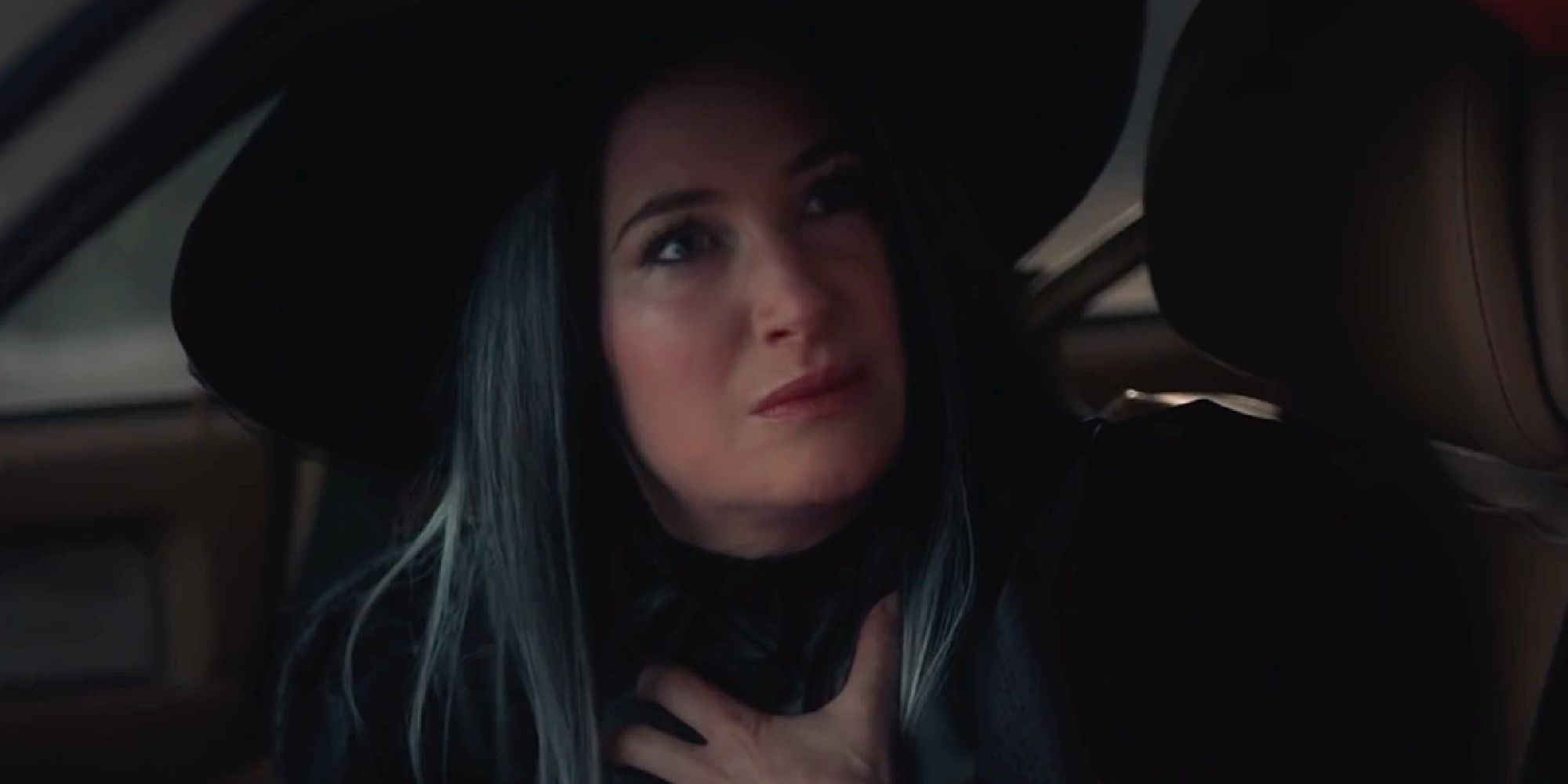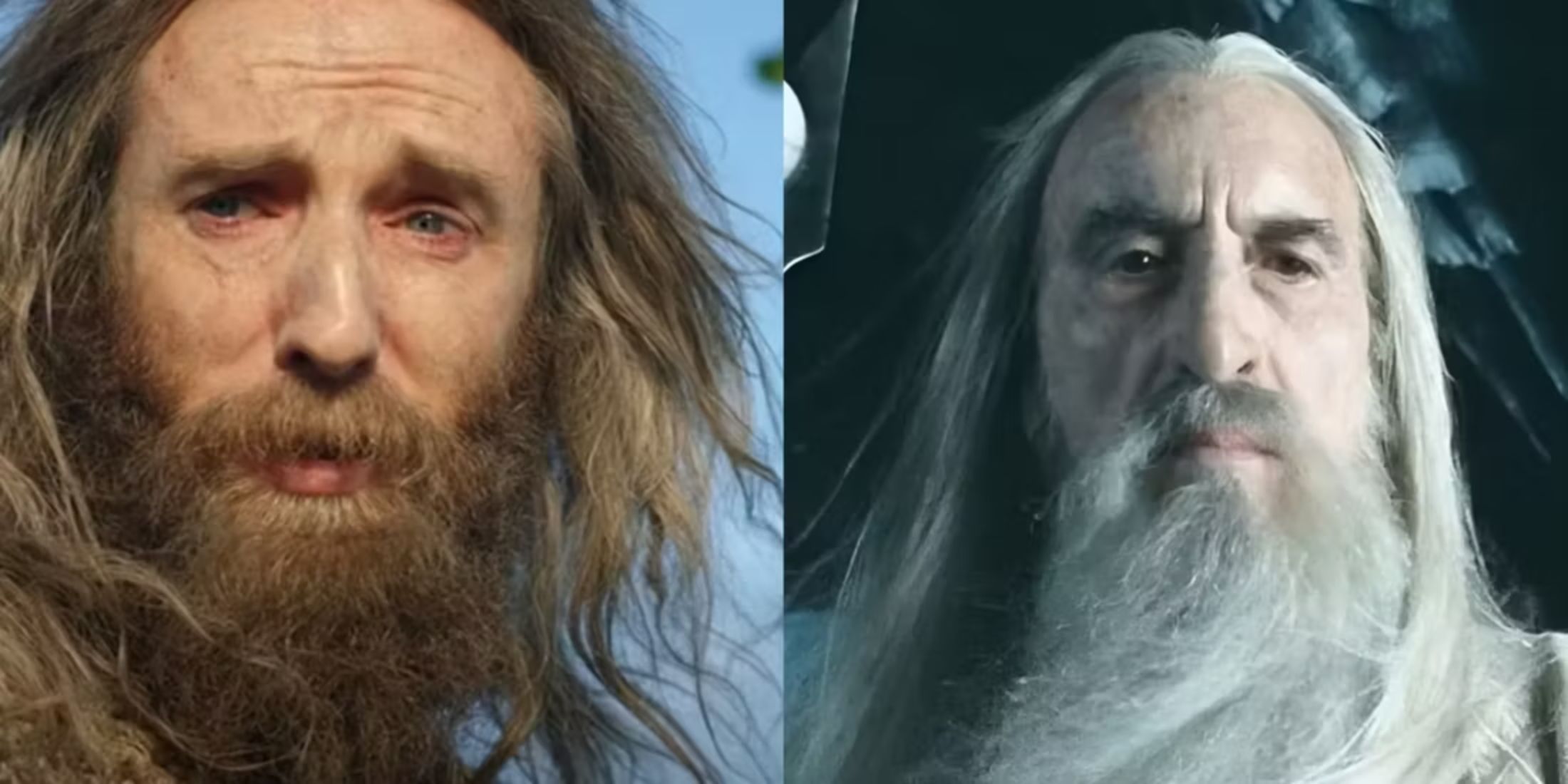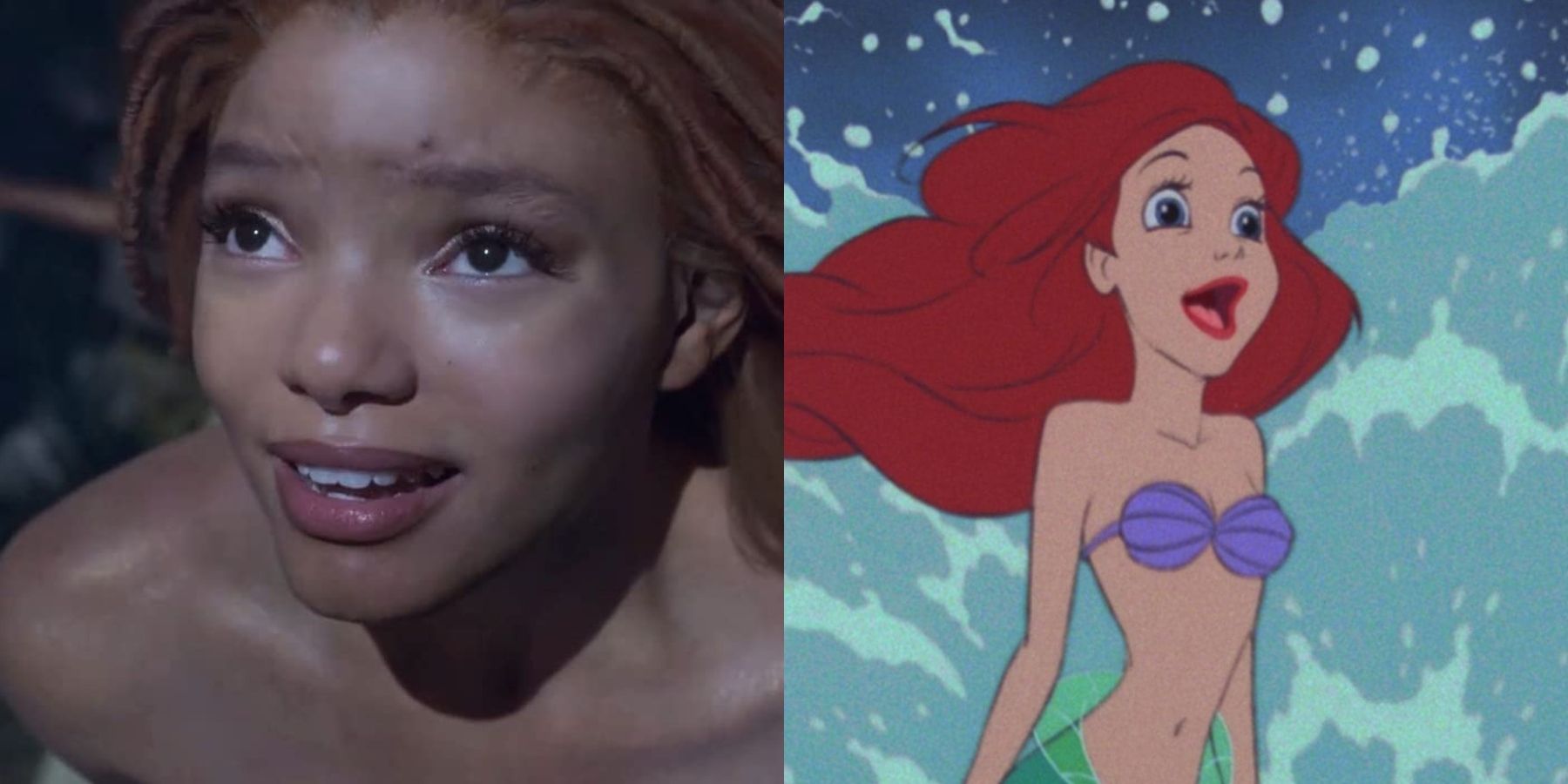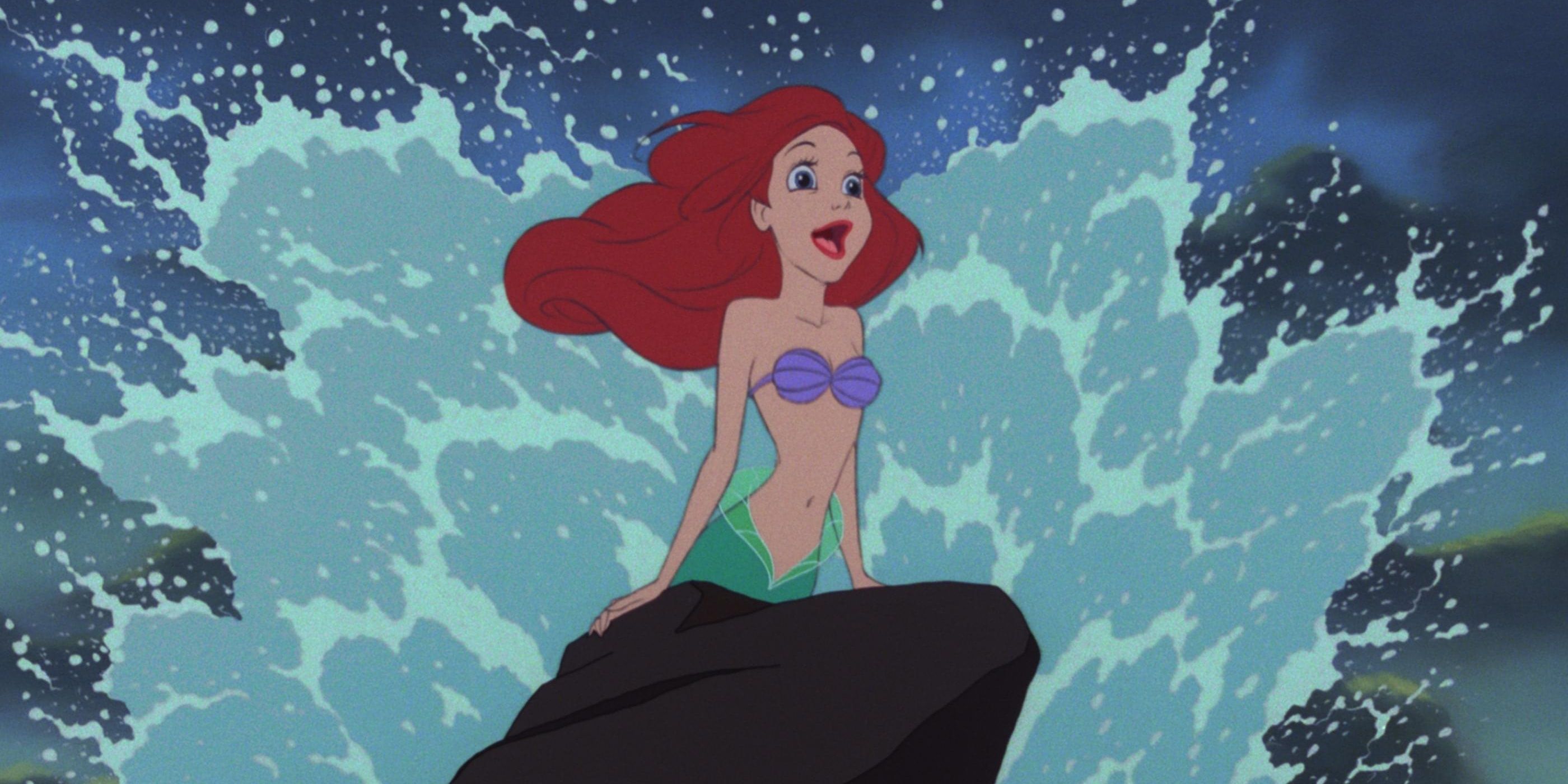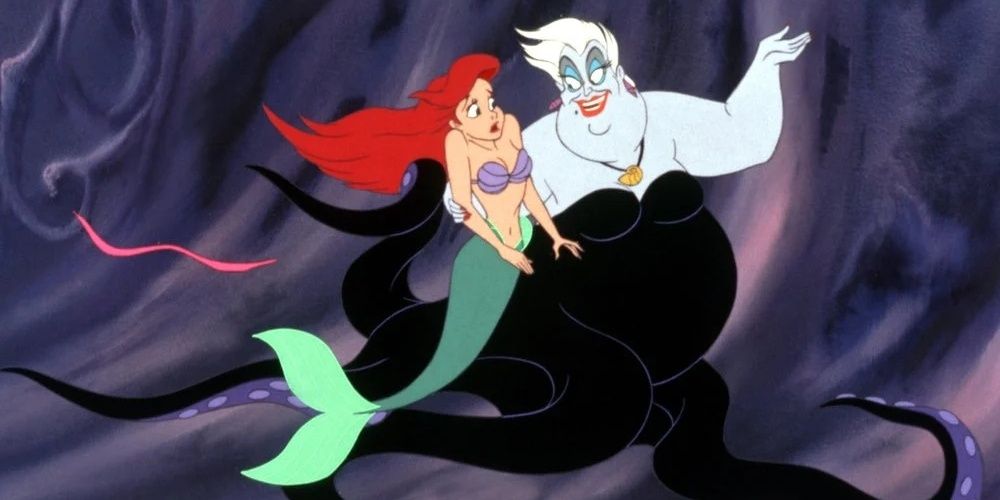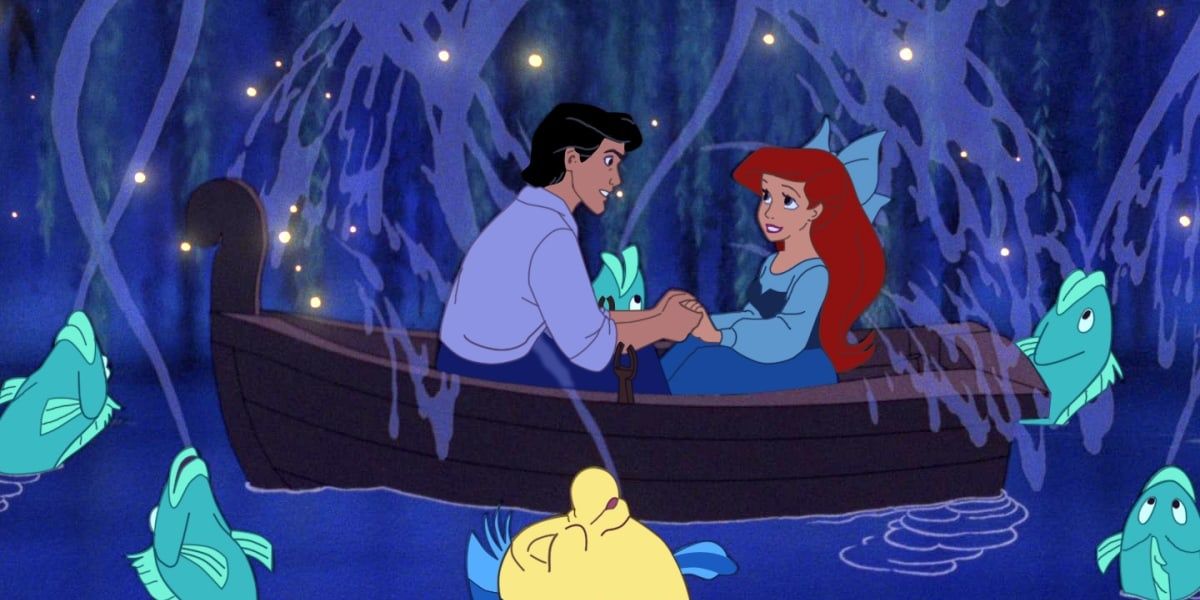Hans Christian Andersen's tale about a mermaid who wants to become human has been a hot topic of conversation recently. Specifically, Disney's version of the classic story has been a hot topic since footage of Disney's latest live-action remake endeavor with The Little Mermaid was first shown at the D23 Expo. There has been quite a mix of reactions to Halle Bailey's casting as Ariel, ranging from racist backlash to excitement around the representation.
Though there are a lot of complaints about Bailey's casting being a departure from the original 1989 animated version, Disney's animated movie itself took a lot of departures from Andersen's original story. While the bare bones of the tale are the same, Disney changed a lot of the details, and even the whole ending itself, to better fit the personal style of their brand and to tell the story they wanted to tell. Here are the biggest ways that Disney changed the classic fairytale to give fans the animated movie that they know and love today.
Ariel
While the protagonist of The Little Mermaid is well-known to most as the fiery redhead Ariel, Hans Christian Andersen's original story never actually names the character, referring to her exclusively as "the little mermaid." She is also not the only character without a name. Prince Eric, Ursula, and King Triton are also much more vaguely named in the story, known as "the prince", "the sea witch", and "the Sea King" respectively. In fact, none of the characters in Andersen's story have names, and are just given descriptors instead. Clearly, Disney thought it wise to name the characters in order to make them more relatable to the audience and make the film easier to follow.
As for a physical description, the little mermaid is never explicitly stated to be a redhead. Really, no description of her hair is given, and the main physical attributes that she exhibits are "clear skin" and blue eyes. Her personality is slightly different in the original fairytale as well; she is still very curious about the world above the surface and wants to live there more than anything, but her strong sense of independence from Disney's animated version isn't quite as present in the fairytale. Her sisters are actually the ones who collect various trinkets from shipwrecks like Ariel does in the Disney movie. The little mermaid does, however, have a statue of the prince in her possession, just like Ariel has in her grotto.
The Sea Witch's Deal
Most of the bare bones of the original story are still present in Disney's version, including the part where the little mermaid seeks out a sea witch in order to grant her wish to experience the surface world more closely. However, Andersen's version of the sea witch's deal is a bit darker than Disney's. This version of the sea witch actually still keeps "water snakes" as pets and seems to dote on them, calling them her "chickens." This is probably where the idea for Ursula's sidekicks and pet eels Flotsam and Jetsam came from in Disney's adaptation.
The actual deal that the sea witch presents to the little mermaid is a lot more intense than in Disney's version. In Disney's The Little Mermaid, Ursula just wants Ariel's voice in exchange for giving her human legs. In Andersen's story, there are a couple more stipulations. The sea witch explains that though the little mermaid will have human legs, every step will feel painful, as if she were walking on knives, and it would actually cause her feet to bleed. Additionally, if she cannot get the prince to fall in love with her and marry her, she will turn to sea foam, essentially dying. This, of course, is all on top of the fact that the sea witch has taken her voice. What's more, the story says that the witch "cut out her tongue," rather than just keeping her voice in a necklace as Ursula does.
A Tragic Ending
While Ariel and Prince Eric get their happily ever after in the Disney version, things don't go quite as well for the little mermaid in the original story. The mermaid struggles to get the prince to fall in love with her, and he even admits that though he cares for her, it's more in the way that one would care for a child that they found endearing, rather than a wife. The prince actually meets a princess of another kingdom and is convinced that she is the one that saved him from the storm. (Of course, that was actually the little mermaid, but she is not able to tell him this because of her missing voice.)
The prince falls in love with this other princess, and before they get married, the little mermaid is sadly staring out to sea, having accepted her fate. Suddenly, her sisters appear and inform her that they have traded their long, beautiful hair to the sea witch in exchange for a chance to give the little mermaid her life back. All she has to do is stab the prince with the magical knife provided by the witch before the sun rises, and she can become a mermaid again and join her sisters in the sea. However, the little mermaid cannot go through with it because her love for the prince is too great, and she tosses the knife into the waves. She then throws herself into the sea as the sun rises and, sadly, fades away into sea foam.
Disney decided to brighten up the story for obvious reasons. Having the plucky protagonist die at the end of the story isn't exactly the kind of thing that most kids (or even adults) want to watch. They actually kept a lot of the original plot and details that Andersen provides, they just made them a little more family-friendly and made Ariel a little spunkier. It will be interesting to see if the live-action remake draws any additional details from Andersen's original fairytale, or if they'll stay true to the sanitized Disney version that everyone knows and loves.

